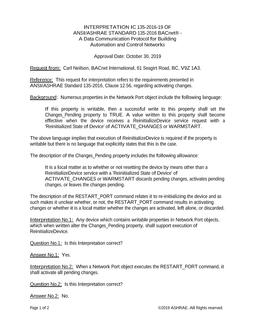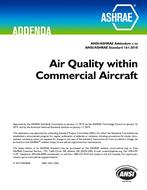Buildings are high users of energy and other resources. There are opportunities to make the building equipment, systems and operations more efficient. It is believed that improvements in efficiency of buildings can be achieved at a relatively lower cost, by including efficiency measures during renovations and reconstruction. The process of improving efficiency entails that an effective integrated design, construction and operations approach be used, engaging architect, engineer, builder, tenants, information technology administrators and trained operating and maintenance staff. In addition, investment decisions need to focus on transforming existing buildings into “Smart and resilient Buildings”. Behavioral changes, development of middle management and Buildings Managers to invoke operational excellence is valuable. This movement is driven not only from climate change concerns, but also due to legislative or business pressures of cutting waste, lowering costs, and adopting modern technology to bring greater transparency. Concurrent with efficient operations, greater focus is also necessary on hardening the buildings and their infrastructure so as to be smarter and adaptive to inclement climatic conditions. However, without the staff developing competencies in energy management, technology, safety, and performance based leadership, such goals cannot be met. Structured training and development of Buildings Managers and Operators can help in immediate operational Improvements without significant capital needs. Building managers face many challenges in sustaining high performance of buildings. The purpose of this paper is to first address the causes of the problems and elements required for transformation to best in class operations. Benefits lie in integrating those elements to sustain high performance, over the life-cycle of a building. Missed opportunities of including efficiency measures can have adverse performance and cost consequences during the life time of the building. Embracing performance measurements and benchmarking, employing operational “best practices” and commitment to development of staff capacity can be a great asset. Energy use tracking and analytics can guide the operations and maintenance staff in performing their responsibilities and facilitate continuous commissioning. Facilities managers and IT system administrators need to collaborate to be able to dynamically manage the building operating parameters based on occupancy, time of day, and other human, environmental, and business and resilience considerations. Use of Green Procurement, recycling program, regular sensor and equipment calibration, and computerized maintenance management systems can further boost the performance.
Citation: International Conference on Efficient Building Design, Materials and HVAC Equipment Technologies; October 2-3, 2014; Beirut, Lebanon
Product Details
- Published:
- 2014
- Number of Pages:
- 8
- File Size:
- 1 file , 2.8 MB
- Product Code(s):
- D-ICEB14-02


